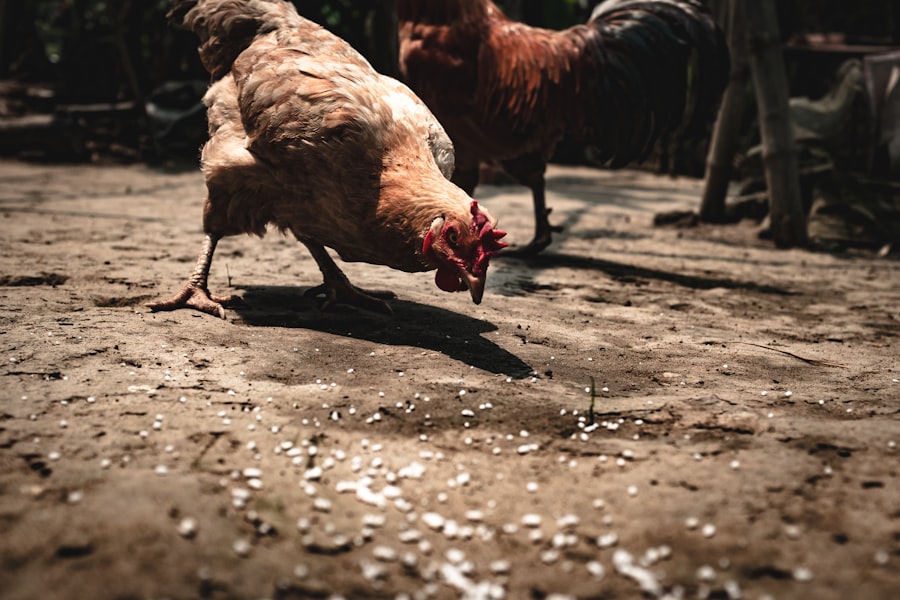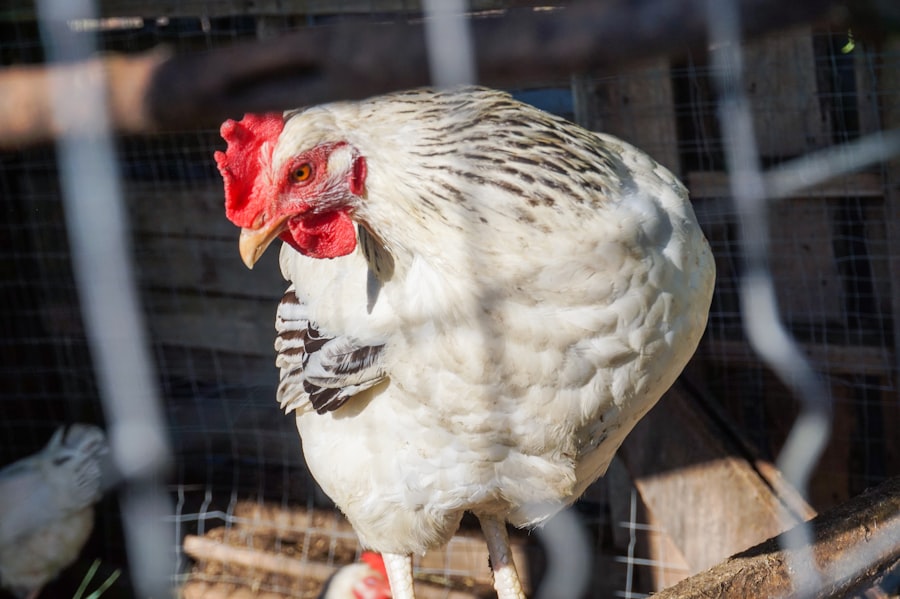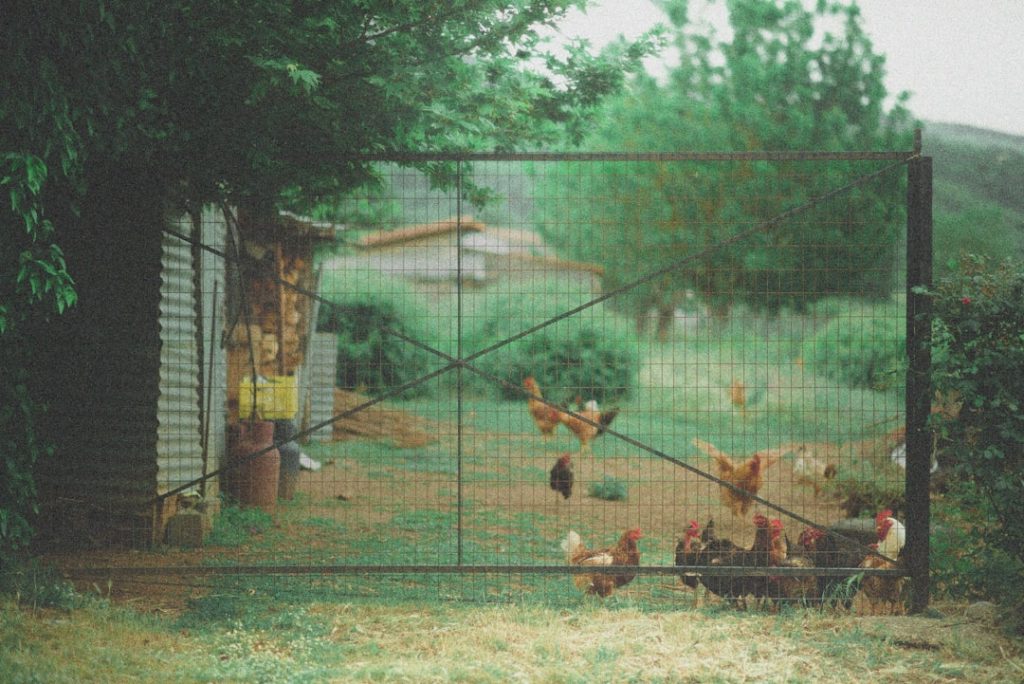When considering chicken husbandry, providing sufficient space is essential for the birds’ health and welfare. Chickens are gregarious creatures that need room to move, forage, and exhibit natural behaviors. The space requirements for chickens vary based on factors such as breed, age, and intended purpose.
For instance, laying hens may need more space than broilers, and larger breeds typically require more area than bantams. Space needs also differ depending on whether the chickens are confined to a coop or allowed to free-range. Chickens kept in enclosed coops should have adequate space to move freely, perch, nest, and engage in natural behaviors like dust bathing.
Insufficient space can result in stress, aggression, and health problems within the flock. Free-range chickens require even more space to roam and forage. Providing ample space is crucial not only for physical health but also for mental well-being.
Chickens with sufficient space to express natural behaviors are less likely to develop issues such as feather pecking and aggression. Understanding and meeting the space requirements for chickens is fundamental to creating a healthy and harmonious environment for the flock. Proper space allocation contributes to the overall welfare and productivity of the birds, ensuring they remain content, healthy, and productive throughout their lives.
Table of Contents
- 1 Factors to Consider When Determining Space for Chickens
- 2 Calculating the Minimum Space Needed for a Flock of Chickens
- 3 Tips for Maximizing Space in a Small Chicken Coop
- 4 The Importance of Outdoor Space for Free-Range Chickens
- 5 Potential Issues with Inadequate Space for Chickens
- 6 Finding the Right Balance of Space for Happy, Healthy Chickens
- 7 FAQs
- 7.1 What is the minimum space requirement for keeping chickens?
- 7.2 What factors should be considered when determining the space needed for chickens?
- 7.3 How does the breed of the chickens affect the space requirement?
- 7.4 What are the benefits of providing adequate space for chickens?
- 7.5 Are there any legal requirements for the space needed to keep chickens?
Key Takeaways
- Chickens require a minimum of 2-3 square feet of space per bird in the coop, and 8-10 square feet of outdoor space per bird.
- Factors to consider when determining space for chickens include the breed, size, and age of the birds, as well as the climate and available resources.
- To calculate the minimum space needed for a flock of chickens, multiply the number of birds by the recommended square footage per bird for both the coop and outdoor space.
- Tips for maximizing space in a small chicken coop include using vertical space, providing roosting bars, and utilizing nesting boxes that can be accessed from outside the coop.
- Outdoor space is important for free-range chickens to exhibit natural behaviors, forage for food, and get exercise, which contributes to their overall health and well-being.
- Inadequate space for chickens can lead to issues such as aggression, stress, poor egg production, and an increased risk of disease and parasites.
- Finding the right balance of space for chickens is crucial for ensuring their happiness and health, and requires careful consideration of their needs and the available resources.
Factors to Consider When Determining Space for Chickens
Breed and Size of Chickens
The breed of chickens being kept is a crucial factor in determining space requirements. Larger breeds, such as Orpingtons and Australorps, require more space than smaller bantam breeds like Silkies and Sebrights.
Age and Purpose of Chickens
The age of the chickens is another important consideration. Young chicks require less space initially, but as they grow, they need more room to move around. The purpose of keeping chickens also plays a role in determining space needs. Laying hens, for example, require more space than meat birds as they are more active and need room to lay eggs comfortably.
Coop Space and Free-Ranging
Whether the chickens are kept in a confined coop or allowed to free-range also affects space requirements. Chickens kept in a coop need enough space to move around, perch, nest, and engage in natural behaviors. A general rule of thumb is to provide at least 2-3 square feet of space per chicken inside the coop. However, if the chickens are allowed to free-range during the day, they require less space inside the coop as they have access to outdoor areas for foraging and roaming.
Calculating the Minimum Space Needed for a Flock of Chickens

Calculating the minimum space needed for a flock of chickens involves considering both indoor and outdoor space requirements. For chickens that are kept in a confined coop, the general recommendation is to provide at least 2-3 square feet of indoor space per chicken. This means that a flock of 6 chickens would require a minimum of 12-18 square feet of indoor space in the coop.
Additionally, nesting boxes should be provided at a ratio of one box for every 3-4 hens to ensure that there is enough space for laying eggs comfortably. In terms of outdoor space, the amount of space needed will depend on whether the chickens are allowed to free-range or if they will be confined to a run. If the chickens are free-ranging during the day, they will require at least 10 square feet of outdoor space per chicken to roam and forage comfortably.
On the other hand, if the chickens will be confined to a run, it’s recommended to provide at least 10 square feet of outdoor space per chicken to allow for adequate movement and exercise. When calculating the minimum space needed for a flock of chickens, it’s important to consider both indoor and outdoor space requirements to ensure that the chickens have enough room to live happily and healthily.
Tips for Maximizing Space in a Small Chicken Coop
Maximizing space in a small chicken coop is essential for providing a comfortable and healthy environment for the flock. One way to maximize space is by utilizing vertical space effectively. Installing roosts at different levels can help create more floor space for the chickens to move around.
Additionally, using hanging feeders and waterers can free up floor space and prevent clutter inside the coop. Another tip for maximizing space in a small coop is to use nesting boxes that can be accessed from outside the coop. This not only saves space inside the coop but also makes it easier to collect eggs without disturbing the hens.
Furthermore, keeping the coop clean and organized can help maximize available space. Regularly removing soiled bedding and keeping feed and supplies organized can prevent clutter and create more room for the chickens. Another way to maximize space in a small coop is by providing ample ventilation and natural light.
Proper ventilation can help prevent moisture buildup and ammonia levels inside the coop, creating a healthier environment for the flock. Additionally, natural light can help create a sense of spaciousness inside the coop and promote healthy egg production in laying hens. Overall, maximizing space in a small chicken coop involves utilizing vertical space effectively, keeping the coop clean and organized, and providing adequate ventilation and natural light.
The Importance of Outdoor Space for Free-Range Chickens
Outdoor space is essential for free-range chickens as it allows them to exhibit natural behaviors such as foraging, dust bathing, and roaming. Providing outdoor space for chickens not only promotes physical health but also contributes to their mental well-being. Free-range chickens have the opportunity to explore their surroundings, find insects and plants to eat, and engage in social interactions with other members of the flock.
Additionally, access to outdoor space can help reduce stress and boredom among chickens, leading to happier and healthier birds. Furthermore, outdoor space provides free-range chickens with exposure to natural sunlight and fresh air, which are important for their overall well-being. Sunlight helps regulate their circadian rhythms and provides essential vitamins necessary for egg production and overall health.
Fresh air helps prevent respiratory issues and keeps ammonia levels low inside the coop. Overall, providing outdoor space for free-range chickens is crucial for allowing them to exhibit natural behaviors, promoting physical and mental health, and creating a harmonious environment for the flock.
Potential Issues with Inadequate Space for Chickens

Stress and Aggression
Overcrowding can lead to increased competition for resources such as food, water, and nesting spaces, resulting in aggressive behavior among chickens. This stress can also weaken their immune system, making them more susceptible to diseases and health issues.
Impact on Egg Production
Inadequate space can also affect egg production in laying hens. When hens do not have enough space to move around comfortably or access nesting boxes easily, they may become stressed and lay fewer eggs.
Behavioral Issues and Health Risks
Inadequate space can lead to behavioral issues such as feather pecking and cannibalism among chickens. Confining chickens in tight spaces without opportunities to exhibit natural behaviors can lead to harmful behaviors towards other flock members. Furthermore, inadequate space can lead to unsanitary conditions inside the coop, increasing the risk of disease transmission among the flock. Moisture buildup from overcrowding can also lead to higher ammonia levels inside the coop, causing respiratory issues in chickens.
Finding the Right Balance of Space for Happy, Healthy Chickens
In conclusion, understanding the space requirements for keeping chickens is essential for creating a happy and healthy environment for the flock. Factors such as breed, age, purpose, and housing system should be considered when determining space needs for chickens. Calculating the minimum space needed involves considering both indoor and outdoor space requirements to ensure that the flock has enough room to live comfortably.
Maximizing space in a small chicken coop involves utilizing vertical space effectively, keeping the coop clean and organized, and providing adequate ventilation and natural light. Providing outdoor space for free-range chickens is crucial for allowing them to exhibit natural behaviors, promoting physical and mental health, and creating a harmonious environment for the flock. Potential issues with inadequate space include stress, aggression, poor egg production, behavioral issues, and increased risk of disease transmission among the flock.
Ultimately, finding the right balance of space is key to ensuring that chickens are happy, healthy, and productive members of the flock. By understanding their needs and providing adequate space, chicken keepers can create a positive environment where their feathered friends can thrive.
If you’re considering keeping chickens, you may be wondering how much space you need for a coop. According to a helpful article on Poultry Wizard, the size of the coop depends on the number of chickens you plan to keep. The article provides detailed information on the space requirements for different flock sizes, as well as tips for creating a comfortable and safe environment for your chickens. For more information on keeping chickens and ducks, visit Poultry Wizard.
FAQs
What is the minimum space requirement for keeping chickens?
The minimum space requirement for keeping chickens is 2-3 square feet per bird inside the coop and 8-10 square feet per bird in an outdoor run.
What factors should be considered when determining the space needed for chickens?
Factors to consider when determining the space needed for chickens include the breed of the chickens, the size of the coop and outdoor run, and the amount of time the chickens will spend outside.
How does the breed of the chickens affect the space requirement?
Different chicken breeds have different space requirements. Larger breeds will need more space compared to smaller breeds. It’s important to research the specific space needs of the breed you plan to keep.
What are the benefits of providing adequate space for chickens?
Providing adequate space for chickens allows them to exhibit natural behaviors, reduces stress and aggression, and promotes overall health and well-being.
Are there any legal requirements for the space needed to keep chickens?
Local regulations and ordinances may dictate the minimum space requirements for keeping chickens. It’s important to check with local authorities to ensure compliance with any legal requirements.
Meet Walter, the feathered-friend fanatic of Florida! Nestled in the sunshine state, Walter struts through life with his feathered companions, clucking his way to happiness. With a coop that’s fancier than a five-star hotel, he’s the Don Juan of the chicken world. When he’s not teaching his hens to do the cha-cha, you’ll find him in a heated debate with his prized rooster, Sir Clucks-a-Lot. Walter’s poultry passion is no yolk; he’s the sunny-side-up guy you never knew you needed in your flock of friends!







